London: Second and Third Day: Tuesday June 9 and Wednesday June 10: Stratford-On-Avon Thursday: Fourth Day: June 11: Written in haste
It’s Thursday morning, June 11th, and I’m beginning this column on the train to Stratford-upon-Avon. I’m writing because even though we are passing through some fine countryside, the frequent hedges and the speed of the train offer few satisfying sights.
It’s Thursday morning, June 11th, and I’m beginning this column on the train to Stratford-upon-Avon. I’m writing because even though we are passing through some fine countryside, the frequent hedges and the speed of the train offer few satisfying sights.
It’s Thursday morning, June 11th, and I’m beginning this column on the train to Stratford-upon-Avon. I’m writing because even though we are passing through some fine countryside the frequent hedges and the speed of the train offer few satisfying sights.
So on Tuesday, after our long Monday march, John and I set out to explore another area of London: the Thames and the Tower of London. Both of us now possess an Oyster Pass, which with a swipe allows us to enter the subway, or tube as the Brits call it. The station officer who helped me purchase the Pass was kind and polite, and this display of manners has proven true throughout our short time here.
The Tower was expensive, about $30 American apiece, but the self-guided tour took us nearly five hours. We saw the Beefeaters (though you hear legends of the origin of this name, one of them told us that in truth no one knew how the name came about), we climbed up the staircases and made the tour around the outside walls, we marveled over the crown jewels, and we sat for a brief lecture from a Beefeater in the ancient church beside which St. Thomas More and many others whom the realm declared traitors or criminals are buried in pits.
A few other scattered remarks here: for nearly five hundred years, this fortress served as home to England’s monarchs. Only five people were ever executed on the grounds, and these five include three English queens: Anne Boleyn, Catherine Howard, and Lady Jane Gray. In what were once barracks the thirty-five Beefeaters live on the grounds with their family, with rafts of flowers adorning their tiny yards To become a Beefeater, one must serve with distinction for twenty-two years in the military and then go through a special application process. Other military personal, looking like tin soldiers in their red coats and bearskin caps, stand with automatic weapons guarding the crown jewels and a couple of other buildings.
That evening we dined in a restaurant frequented by business types, young and middle-aged men in suits, few of whom wore ties. The smokers were gathered in the alleyway outside the pub, puffing away and drinking ale. Inside, the young man behind the bar was from Ireland, and sounded very much like Sean, Jeremy’s first-year roommate at Christendom College. We got to talking and indeed, he is, as is Sean, from Galway. Then it was home and to bed.
On Wednesday, June 10th, we headed back to the center of the city. John toured St. Paul’s, climbing to the top, a hike of over 500 steps, and received as his reward a splendid panoramic view of the city. Across the street in a Starbucks I sat drinking coffee, answering emails, and writing yesterday’s post.
We then walked a good distance to Charing Cross Road, once the home of a score or more of London’s bookshops. Few of these shops remain, but I did go in search of a bookshop memorial I’d read about, a small plague dedicated to Marks and Co., the store made famous by the American Helene Hanff in her memoir, 84 Charing Cross Road. In this memoir, set mostly in the late 1940s and the 1950s, Miss Hanff recorded her love affair with literature and with Great Britain, and the book was later made into a little gem of a film, starring Anne Bancroft and Anthony Hopkins. The former Marks and Co. now serves up MacDonald’s hamburgers, a circumstance that would no doubt have distressed Miss Hanff but which, once the shock faded, amused me.
Then a visit to the National Gallery of Art, and more walking around, and then the red line on the Tube. We set out east rather than west, rectified our mistake after two stops, and alighted soon at Holland Place, where we enjoyed a supper in the local pub. Later that evening, over some champagne, we engaged in a long conversation with our hosts Geoff and Susan about English life. (They apparently don’t have “tea” much anymore, as in a set ceremony).
Now, for today: We woke early, did some plotting on how to get to Stratford-on-Avon, and packed, with me leaving the big suitcase with the Kittredges. Susan was kind enough to give us a drive to Marylebone Station—it is near the school of Lyndon, her seven-year-old—and then we were flying south on the train.
Stratford-on-Avon opened her arms to us like a beautiful woman. The weather was gorgeous, with a bright hot sun and a blue cloudless sky. The River Avon swarmed with ducks and swans, rowing teams, canoes, rowboats, and houseboats, and the streets, though alive with tourists, were tranquility itself when compared to London.
Our first stop was a visit to Shakespeare’s grave, whose body lies beneath the floor of the chancel inside Holy Trinity Church. (On our way to the church, we passed the Guild Hall, whose upper floor contains a school which Shakespeare himself attended long ago). Displayed near the chancel of the church are various posters explaining Shakespeare’s life of faith; whoever composed these paragraphs should receive a medal for combining facts about life in Tudor times while embedding wonderful points of Christianity within the text. Also impressive was the large Bible in the prayer chapel, which lay open to John 3:16, reminding the visitor of the way to eternal life.
At two o’clock, Jessica Harvey, a student of mine visiting relatives here, met us at Starbucks on High Street, and the three of us strolled to a nearby Mediterranean restaurant, where John and I ate lunch while Jessica drank tea. Another hour carried me into Shakespeare’s birthplace while John and Jessica wandered about outside. To walk in these spacious rooms—Shakespeare’s father, a glove-maker, was upper middle class for his day—was a treat, but the highlight of the tour was the sign in the gift shop on a low ceiling that read: “Please mind your head.” I knew its real meaning, of course, but the variations on that idea cracked me up. If only all of us could mind our heads, how much better might the world be?
For our last couple of hours in Stratford, the three of us ambled about the city, sat for a while by the Avon, and then grabbed a drink in a tavern that was serving up ale when Shakespeare was a boy. (The law for drinking here is age sixteen, if an adult buys the drink. I bought the drink).
Now we are in our quarters for the night, a room a mile and a half from Stratford booked through Airbnb. Our host, Laura, is a gracious woman who has traveled extensively throughout the world. She and John are talking travel plans five feet away from me as I write these words.
And now to bed.
So on Tuesday, after our long Monday march, John and I set out to explore another area of London: the Thames and the Tower of London. Both of us now possess an Oyster Pass, which with a swipe allows us to enter the subway, or tube as the Brits call it. The station officer who helped me purchase the Pass was kind and polite, and this display of manners has proven true throughout our short time here.
The Tower was expensive, about $30 American apiece, but the self-guided tour took us nearly five hours. We saw the Beefeaters (though you hear legends of the origin of this name, one of them told us that in truth no one knew how the name came about), we climbed up the staircases and made the tour around the outside walls, we marveled over the crown jewels, and we sat for a brief lecture from a Beefeater in the ancient church beside which St. Thomas More and many others whom the realm declared traitors or criminals are buried in pits.
A few other scattered remarks here: for nearly five hundred years, this fortress served as home to England’s monarchs. Only five people were ever executed on the grounds, and these five include three English queens: Anne Boleyn, Catherine Howard, and Lady Jane Gray. In what were once barracks the thirty-five Beefeaters live on the grounds with their family, with rafts of flowers adorning their tiny yards To become a Beefeater, one must serve with distinction for twenty-two years in the military and then go through a special application process. Other military personal, looking like tin soldiers in their red coats and bearskin caps, stand with automatic weapons guarding the crown jewels and a couple of other buildings.
That evening we dined in a restaurant frequented by business types, young and middle-aged men in suits, few of whom wore ties. The smokers were gathered in the alleyway outside the pub, puffing away and drinking ale. Inside, the young man behind the bar was from Ireland, and sounded very much like Sean, Jeremy’s first-year roommate at Christendom College. We got to talking and indeed, he is, as is Sean, from Galway. Then it was home and to bed.
On Wednesday, June 10th, we headed back to the center of the city. John toured St. Paul’s, climbing to the top, a hike of over 500 steps, and received as his reward a splendid panoramic view of the city. Across the street in a Starbucks I sat drinking coffee, answering emails, and writing yesterday’s post.
We then walked a good distance to Charing Cross Road, once the home of a score or more of London’s bookshops. Few of these shops remain, but I did go in search of a bookshop memorial I’d read about, a small plague dedicated to Marks and Co., the store made famous by the American Helene Hanff in her memoir, 84 Charing Cross Road. In this memoir, set mostly in the late 1940s and the 1950s, Miss Hanff recorded her love affair with literature and with Great Britain, and the book was later made into a little gem of a film, starring Anne Bancroft and Anthony Hopkins. The former Marks and Co. now serves up MacDonald’s hamburgers, a circumstance that would no doubt have distressed Miss Hanff but which, once the shock faded, amused me.
Then a visit to the National Gallery of Art, and more walking around, and then the red line on the Tube. We set out east rather than west, rectified our mistake after two stops, and alighted soon at Holland Place, where we enjoyed a supper in the local pub. Later that evening, over some champagne, we engaged in a long conversation with our hosts Geoff and Susan about English life. (They apparently don’t have “tea” much anymore, as in a set ceremony).
Now, for today: We woke early, did some plotting on how to get to Stratford-on-Avon, and packed, with me leaving the big suitcase with the Kittredges. Susan was kind enough to give us a drive to Marylebone Station—it is near the school of Lyndon, her seven-year-old—and then we were flying south on the train.
Stratford-on-Avon opened her arms to us like a beautiful woman. The weather was gorgeous, with a bright hot sun and a blue cloudless sky. The River Avon swarmed with ducks and swans, rowing teams, canoes, rowboats, and houseboats, and the streets, though alive with tourists, were tranquility itself when compared to London.
Our first stop was a visit to Shakespeare’s grave, whose body lies beneath the floor of the chancel inside Holy Trinity Church. (On our way to the church, we passed the Guild Hall, whose upper floor contains a school which Shakespeare himself attended long ago). Displayed near the chancel of the church are various posters explaining Shakespeare’s life of faith; whoever composed these paragraphs should receive a medal for combining facts about life in Tudor times while embedding wonderful points of Christianity within the text. Also impressive was the large Bible in the prayer chapel, which lay open to John 3:16, reminding the visitor of the way to eternal life.
At two o’clock, Jessica Harvey, a student of mine visiting relatives here, met us at Starbucks on High Street, and the three of us strolled to a nearby Mediterranean restaurant, where John and I ate lunch while Jessica drank tea. Another hour carried me into Shakespeare’s birthplace while John and Jessica wandered about outside. To walk in these spacious rooms—Shakespeare’s father, a glove-maker, was upper middle class for his day—was a treat, but the highlight of the tour was the sign in the gift shop on a low ceiling that read: “Please mind your head.” I knew its real meaning, of course, but the variations on that idea cracked me up. If only all of us could mind our heads, how much better might the world be?
For our last couple of hours in Stratford, the three of us ambled about the city, sat for a while by the Avon, and then grabbed a drink in a tavern that was serving up ale when Shakespeare was a boy. (The law for drinking here is age sixteen, if an adult buys the drink. I bought the drink).
Now we are in our quarters for the night, a room a mile and a half from Stratford booked through Airbnb. Our host, Laura, is a gracious woman who has traveled extensively throughout the world. She and John are talking travel plans five feet away from me as I write these words.
And now to bed.
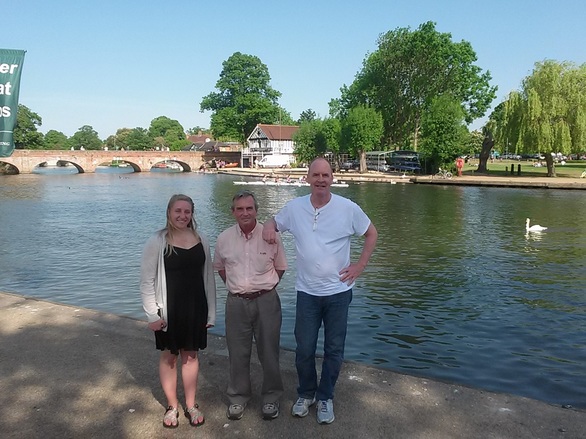
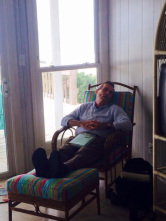
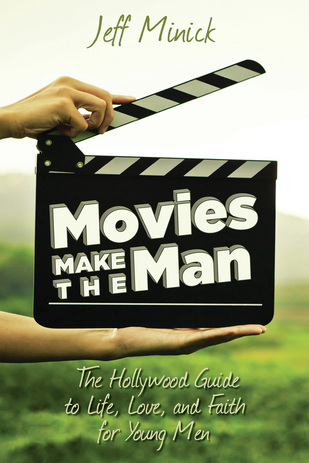
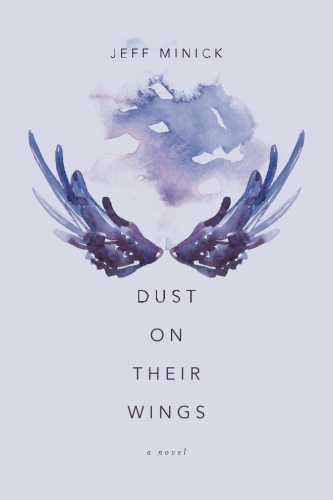
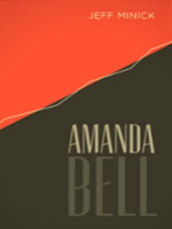
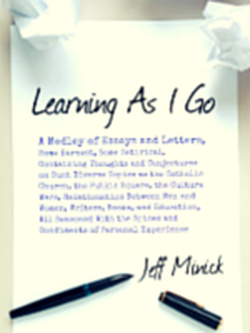
 RSS Feed
RSS Feed